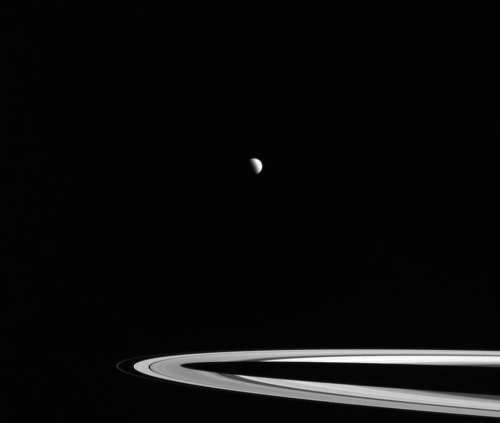Lanas-own-blog - My Personal Space.

More Posts from Lanas-own-blog and Others



F-22 Raptor with a launch of the Space Shuttle in the background.






Our Flying Observatory Goes to New Zealand!
Our flying observatory, called SOFIA, carries a 100-inch telescope inside a Boeing 747SP aircraft. Scientists onboard study the life cycle of stars, planets (including Pluto’s atmosphere), the area around black holes and complex molecules in space.
Heading South

Once each year our flying observatory, SOFIA, its team and instruments travel to the Southern Hemisphere to Christchurch, New Zealand. From there the team studies stars and other objects that cannot be seen while flying in the Northern Hemisphere.
What We Study

We often study star formation in our Milky Way Galaxy. But from the Southern Hemisphere we can also study the lifecycle of stars in two other galaxies called the Magellanic Clouds. The Magallenic Clouds have different materials in them, which changes how stars form in these galaxies. Scientists are studying these differences to better understand how the first stars in our universe formed.
Home Away from Home

The observatory and its team use the National Science Foundation’s U.S. Antarctic Program facility at Christchurch International Airport. The Antarctic program’s off-season is June and July, so it’s an ideal time for us to use these facilities.
Another Blast of Winter

The Southern Hemisphere’s seasons are opposite from our own. When we are operating from Christchurch in June and July, it’s winter. This means that the nights are very long – ideal for our nighttime observing flights, which last approximately 10 hours.
Light Show

These observations often bring us so far south that the team onboard can see the Southern Lights, also called the Aurora Australis. This is the Southern Hemisphere equivalent of the Northern Lights, or Aurora Borealis, visible near the North Pole. Auroras are caused by particles from space hitting the atmosphere near Earth’s magnetic poles. Our scientists onboard SOFIA don’t study the aurora, but they do enjoy the view.
Make sure to follow us on Tumblr for your regular dose of space: http://nasa.tumblr.com

Titan with the rings of Saturn.

“I probably cried more for this story than any other stories I’ve done,“ says the photographer. “There were some film producers and editors that I wanted to work with. I showed them [my] footage and they were like, ‘Oh, this is unusable. There’s so much shaking and sobbing in background.’ That was just me. It was a very emotional experience.”

Incredible “EPIC” View Of The Moon Passing In Front Of The Earth
This is real, folks. It is not a computer-generated animation. NASA’s DSCOVR (Deep Space Climate Observatory) satellite took these incredible shots on July 16 using its Earth-facing EPIC camera from its vantage point between the Earth and the Sun, a million miles away!
DSCOVR sits at what’s known as the L1 Lagrangian point, where the gravitational pull of the Earth and Sun balance out in such a way that satellites positioned there can remain in stable orbit while using minimal energy:

Image: NASA/NOAA
This view of the far side of the Moon reminds us that it is anything but dark. The Moon is tidally locked, meaning that we see the same face all the time, but the sun regularly shines on the side that we don’t see (we’re just seeing a new or crescent moon when that happens). The far side also lacks the dark plains, or maria, that texture the Earth-facing side, made of basalt laid down by ancient lunar lava flows, reminding us that our lunar satellite has a complex geologic history:


-
 sandra-lovie reblogged this · 2 months ago
sandra-lovie reblogged this · 2 months ago -
 bloodysummer reblogged this · 1 year ago
bloodysummer reblogged this · 1 year ago -
 prettywildmedia reblogged this · 1 year ago
prettywildmedia reblogged this · 1 year ago -
 lovefi reblogged this · 1 year ago
lovefi reblogged this · 1 year ago -
 lovefi liked this · 1 year ago
lovefi liked this · 1 year ago -
 sorcery-saga liked this · 1 year ago
sorcery-saga liked this · 1 year ago -
 metuere liked this · 2 years ago
metuere liked this · 2 years ago -
 sogo1995 reblogged this · 2 years ago
sogo1995 reblogged this · 2 years ago -
 alice-gergen liked this · 2 years ago
alice-gergen liked this · 2 years ago -
 gaiovski reblogged this · 2 years ago
gaiovski reblogged this · 2 years ago -
 deadmutation reblogged this · 2 years ago
deadmutation reblogged this · 2 years ago -
 humanityinahandbag liked this · 3 years ago
humanityinahandbag liked this · 3 years ago -
 crybabydear liked this · 3 years ago
crybabydear liked this · 3 years ago -
 purpledumbass69 reblogged this · 3 years ago
purpledumbass69 reblogged this · 3 years ago -
 dgotay reblogged this · 4 years ago
dgotay reblogged this · 4 years ago -
 saturn-people reblogged this · 4 years ago
saturn-people reblogged this · 4 years ago -
 vbouquets reblogged this · 4 years ago
vbouquets reblogged this · 4 years ago -
 vbouquets liked this · 4 years ago
vbouquets liked this · 4 years ago -
 okateeth reblogged this · 4 years ago
okateeth reblogged this · 4 years ago -
 okateeth liked this · 4 years ago
okateeth liked this · 4 years ago -
 my-recanto liked this · 5 years ago
my-recanto liked this · 5 years ago -
 evilcatgirlwizard liked this · 5 years ago
evilcatgirlwizard liked this · 5 years ago -
 polezandholez liked this · 5 years ago
polezandholez liked this · 5 years ago -
 sexemese123 liked this · 5 years ago
sexemese123 liked this · 5 years ago -
 pauiy reblogged this · 5 years ago
pauiy reblogged this · 5 years ago -
 0claudiaclouds0 reblogged this · 5 years ago
0claudiaclouds0 reblogged this · 5 years ago -
 0claudiaclouds0 liked this · 5 years ago
0claudiaclouds0 liked this · 5 years ago
I've had lots of blogs in the past, but this one I'm actualy excited to share with people.
68 posts